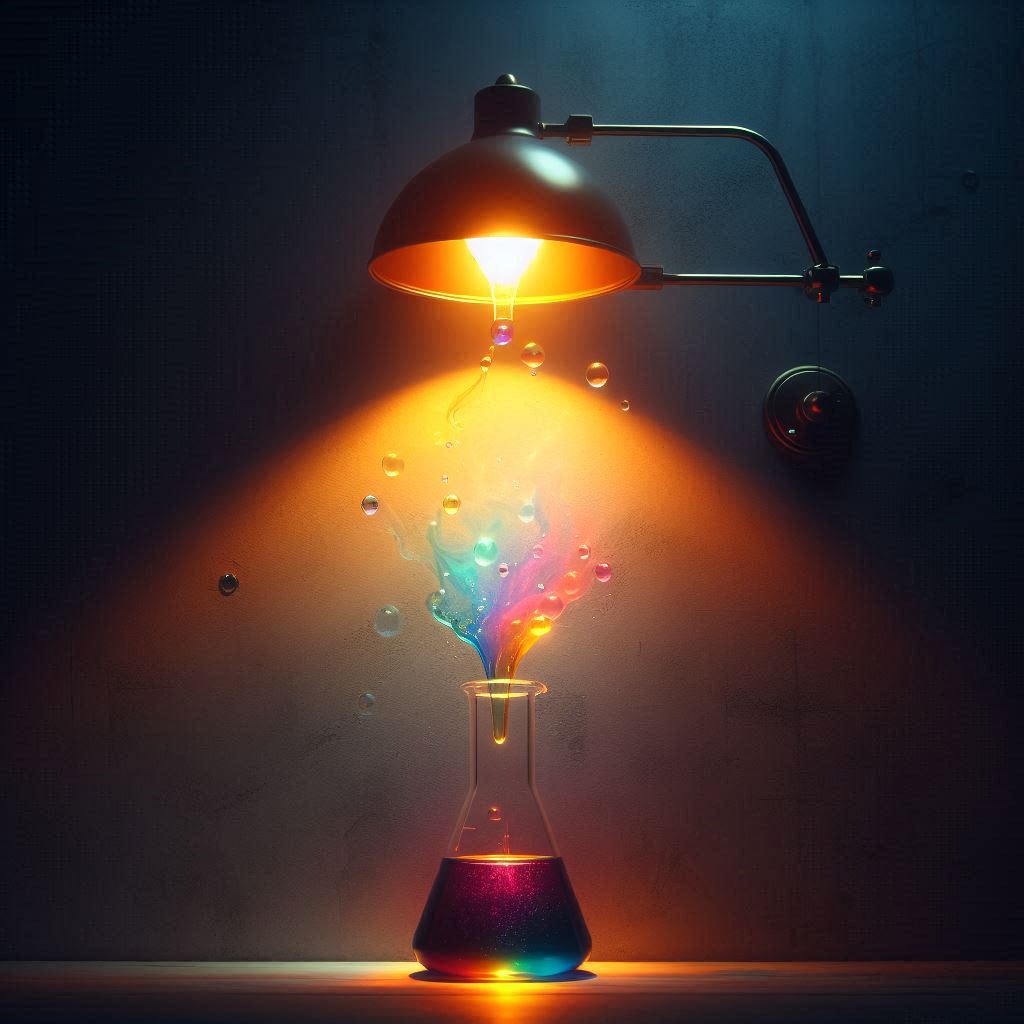In the quest for innovative lighting solutions, wall lights that glow without relying on electrical power have captured the imagination of designers and homeowners alike. Among the most captivating of these innovations is the use of chemical reactions to create light. These chemical wall lights, often referred to as glow-in-the-dark or chemiluminescent lighting, offer a unique approach to illuminating spaces while reducing energy consumption. Let’s explore how this cutting-edge technology works, its benefits, and its potential applications.
The Science Behind Chemiluminescent Wall Lights
At the heart of chemically powered wall lights is chemiluminescence—a process in which light is produced as a result of a chemical reaction. Unlike traditional wall lights, which require electricity or batteries to power a bulb or LED, chemiluminescent lights generate illumination through reactions between specific chemicals. One common example of chemiluminescence is found in glow sticks, which use chemicals such as hydrogen peroxide and a phenyl oxalate ester to produce light. Similarly, chemical wall lights rely on specially engineered materials that, when activated, emit a steady glow without the need for a constant energy source.
Key Features and Benefits
1. Energy Efficiency: Since chemiluminescent wall lights do not rely on electricity or external power sources, they offer an energy-efficient solution. This makes them ideal for outdoor spaces, emergency lighting, or areas where running electrical wiring is difficult.
2. Eco-Friendly: Reducing dependency on electricity means a lower carbon footprint. By using natural chemical reactions, these lights contribute to more sustainable living practices. Many chemiluminescent lights are designed with non-toxic materials, making them safer for the environment.
3. Cost-Effective: Without the need for electricity, chemically glowing wall lights offer long-term cost savings, especially in settings where lights are frequently used. They also require minimal maintenance, as there are no bulbs to replace or electrical components to service.
4. Versatility: Chemical wall lights can be used in a variety of applications, from providing gentle ambient lighting in homes and businesses to offering critical illumination in emergency situations. They are especially useful in areas prone to power outages or in outdoor environments like gardens and pathways.
5. Unique Aesthetic: Chemiluminescent lighting adds a touch of mystique and charm to interior design. The soft, ambient glow it produces can create a calming atmosphere, perfect for mood lighting in living rooms, bedrooms, and entertainment areas. Their ability to glow in a variety of colors also makes them a flexible choice for creative design schemes.
Practical Applications of Chemical Wall Lights
1. Emergency Lighting: Chemiluminescent wall lights are a practical option for emergency lighting during power outages or natural disasters. Their glow can last for several hours, providing crucial illumination when it’s most needed.
2. Outdoor Use: For those seeking to illuminate pathways, gardens, or outdoor walls without the need for electrical wiring, chemical lights offer a reliable and aesthetically pleasing solution. They can be used to enhance nighttime visibility while adding a soft, natural glow to outdoor spaces.
3. Interior Décor: Designers have begun to incorporate these lights into modern interior spaces, especially in areas where a subtle, ambient glow is desired. Whether used in hallways, staircases, or as nightlights, chemiluminescent wall lights provide a unique aesthetic that can’t be matched by traditional lighting.
4. Public Spaces: Parks, trails, and other public outdoor areas can benefit from chemically glowing lights. They enhance safety at night without the high costs associated with conventional lighting systems. Their low maintenance and sustainable nature make them ideal for such large-scale applications.
5. Art and Installations: Chemiluminescent lighting is also gaining popularity in the art world, where its glowing properties can be used to create immersive installations and innovative light sculptures. In spaces where creativity and originality are essential, these lights provide designers and artists with an exciting new medium.
Future of Chemical Wall Lights
As technology continues to advance, the potential for chemical wall lights to become a mainstream lighting option grows. Research into more efficient and longer-lasting chemiluminescent materials is already underway, with the goal of extending the lifespan and brightness of these lights. Furthermore, the focus on sustainability in the lighting industry is pushing chemical lighting into the spotlight as a viable solution for eco-conscious consumers.
The future may also see the integration of this technology with smart home systems. Imagine wall lights that glow by chemical reaction, activated by sensors that detect movement or changes in ambient light levels. Such innovations could lead to even more energy savings and convenience.
Conclusion
Wall lights that glow through chemical reactions offer a fascinating glimpse into the future of sustainable lighting. By eliminating the need for electricity and harnessing the power of chemistry, they provide an eco-friendly, cost-effective, and aesthetically pleasing option for homeowners, businesses, and public spaces alike. Whether used for emergency lighting, outdoor pathways, or artistic installations, chemically glowing wall lights represent a bold step forward in the lighting industry—one that promises to reshape how we think about illumination for years to come.

